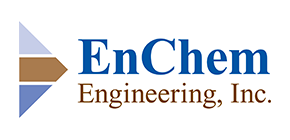XCTTM
Better Technology. Better Results.
XCT TM (Extra Contact Technologies) is an effective in-situ (in-ground) soil flushing process to extract contaminants from soil in order to bring sites into regulatory compliance and closure faster and with less cost. The proprietary XCTTM process developed by EnChem Engineering, Inc. uses a natural carbohydrate to solubilize emerging contaminants such as perfluoroalkyl compounds (PFAS) or traditional contaminants such as gasoline, fuel oils, and chlorinated organic compounds such as tetrachloroethene; that are then extracted by using groundwater extraction wells. The XCTTM solution containing the contaminants is then treated and destroyed ex-situ (above ground) using our proprietary OxyZone® processes.
About Enchem Engineering
EnChem Engineering, Inc. possesses the underlying technical environmental remediation expertise, facilities and staff to solve the most complex emerging contaminant environmental challenges. We have been a hazardous waste consultant to the U.S. Environmental Protection Agency; National Institute of Health; the US Air Force and Fortune 500 companies.
Benefits Process
• Versatile
• Effective Treatment
• Non-Toxic
• Cost Effective
Call (617) 795-0058 for a free consultation. Ask for our white papers on environmental remediation with OxyZone® and XCTTM.
Benefits of The XCTTM Process
Versatile – a wide range of organic contaminants can be extracted and flushed from soil and groundwater and treated above ground where treatment effectiveness can be completely verified.
Effective Treatment – When XCTTM is combined with OxyZone®, there is a very high degree of extraction and treatment accomplished.
Non-Toxic – The XCTTM process does not leave any reaction by-products in the soil
Cost Effective – More complete clean-up in less time results in lower total cost.
RESULTS
The results have indicated that the patented processes of OxyZone® and OxyZone® and XCTTM were successful at desorbing, remediating and destroying the majority of the traditional petroleum hydrocarbon and chlorinated organic contaminants. A statistical analysis comparing the PFAS concentrations in wells within the injection test cell to those outside the injection test cell showed a statistically significant decrease in PFAS concentrations within the test cell, but not outside. Additionally, groundwater concentration of the conservative tracer chloride showed no overall dilution impact from the injections, suggesting that there was no or minimal dilution of PFAS. The data also showed that PFAS concentrations did not rebound within the subsequent six month post-inection period. For more details please as for our whitepaper.

